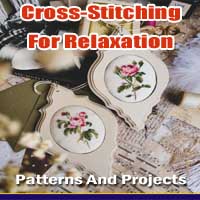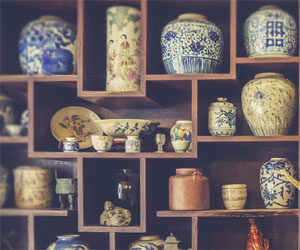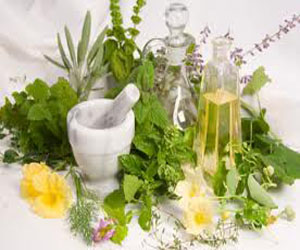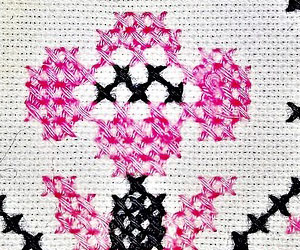


Unearthing Value In Vintage And Thrifted Finds

Secondhand treasures, often discovered in vintage stores, thrift shops, garage sales, and flea markets, are items that have been pre-loved and passed on to new owners. These treasures encompass a wide range of goods, from clothing and furniture to collectibles and decor pieces. In this article, we'll delve into the allure of secondhand treasures and explore the reasons behind their growing popularity.
The Allure Of Secondhand Treasures
Affordability: Secondhand treasures are often more budget-friendly than brand-new items. Thrift shops and vintage stores provide an opportunity to find quality products at a fraction of their original cost.
Unique Finds: Secondhand treasures are unique and distinct from mass-produced, contemporary goods. Vintage items often feature designs, craftsmanship, and aesthetics that are no longer readily available in modern markets.
Quality Craftsmanship: Many secondhand items were created during eras when quality and durability were highly valued. These pieces often exhibit superior craftsmanship, making them appealing to those who appreciate well-made goods.
Environmental Consciousness: Secondhand treasures align with eco-conscious lifestyles. By buying used items, consumers reduce the demand for new manufacturing and help minimize waste and carbon emissions.
Historical And Cultural Significance: Secondhand treasures carry history and cultural significance. Each item has its own story and represents a slice of the past, offering a tangible connection to bygone eras.
What Can Be Found
The variety of secondhand treasures is astounding. These items span numerous categories, including:
Clothing: Vintage clothing, including dresses, suits, and accessories, allows wearers to showcase unique and timeless style.
Furniture: Secondhand furniture pieces, such as mid-century modern chairs, antique tables, and vintage cabinets, add character and functionality to homes.
Collectibles: Vintage toys, records, antique books, and rare coins are sought-after collectibles that capture nostalgia and historical value.
Home Decor: Secondhand home decor items, like vintage artwork, retro kitchenware, and decorative glassware, infuse charm and personality into living spaces.
The Thrill Of The Hunt
Part of the allure of secondhand treasures lies in the thrill of the hunt. Scouring thrift stores, garage sales, or online marketplaces for hidden gems can be a rewarding adventure. The anticipation of discovering something unique and valuable amplifies the enjoyment of the process.
Sustainability And Secondhand Treasures
The appeal of secondhand treasures extends beyond their aesthetic and economic value. It aligns with sustainable and environmentally responsible living. By choosing secondhand items over new purchases, individuals contribute to the reduction of waste and the conservation of resources. It's a small yet meaningful step toward a more eco-conscious lifestyle.
Secondhand treasures hold an enduring charm for collectors, fashion enthusiasts, and those seeking quality goods with history and character. These items offer affordability, unique aesthetics, and sustainable options that appeal to a growing number of consumers. The journey of exploring secondhand treasures is not only a chance to discover hidden gems but also an opportunity to make more environmentally responsible choices and connect with the rich tapestry of the past. Whether you're on the lookout for a vintage statement piece or simply enjoy the thrill of the hunt, secondhand treasures offer a world of possibilities for those with a discerning eye and an appreciation for the past.
A Sustainable Lifestyle For A Better Future
 Reduce, Reuse, Recycle: This timeless mantra forms the foundation of green living. Reducing consumption, reusing items when possible, and recycling materials are essential steps in minimizing waste.
Reduce, Reuse, Recycle: This timeless mantra forms the foundation of green living. Reducing consumption, reusing items when possible, and recycling materials are essential steps in minimizing waste.
Energy Efficiency: Green living encourages energy-conscious choices such as using energy-efficient appliances, properly insulating homes, and turning off lights and electronics when not in use.
Sustainable Transportation: Opting for eco-friendly modes of transportation, such as biking, walking, carpooling, or using public transit, reduces carbon emissions associated with personal vehicles.
Sustainable Food Choices: Adopting a diet rich in locally sourced, organic, and plant-based foods can reduce the carbon footprint associated with food production and distribution.
Water Conservation: Conserving water through practices like fixing leaks, using low-flow fixtures, and reducing water waste is a fundamental aspect of green living.
Minimalism: Embracing minimalism involves living with fewer possessions, which not only reduces consumption but also fosters a simpler, more sustainable lifestyle.
Benefits Of Green Living
Reduced Environmental Impact: Green living minimizes resource consumption, lowers carbon emissions, and reduces waste, thus mitigating harm to the environment.
Cost Savings: Energy-efficient practices, reduced consumption, and sustainable choices often lead to financial savings over time.


A Journey Towards Health And Well-Being
 Safer Skincare: Personal care products, such as cosmetics and skincare items, are notorious for containing synthetic chemicals. Safer alternatives often come in the form of natural or organic products. These are made with ingredients sourced from nature, reducing the risk of skin irritation, allergies, or exposure to harmful substances.
Safer Skincare: Personal care products, such as cosmetics and skincare items, are notorious for containing synthetic chemicals. Safer alternatives often come in the form of natural or organic products. These are made with ingredients sourced from nature, reducing the risk of skin irritation, allergies, or exposure to harmful substances.
Chemical-Free Cleaning: Conventional household cleaning products often contain a mix of harsh chemicals, many of which can be harmful to both human health and the environment. Safer alternatives include natural cleaning products, such as vinegar, baking soda, and plant-based cleaners, which effectively clean without the toxic residue.
Nutrition And Food Choices: Safer alternatives extend to our diet. Organic produce, for instance, reduces exposure to pesticides and synthetic additives. Opting for whole foods over processed ones is another way to embrace a healthier approach to nutrition.
Reducing Plastic: Plastic pollution is a significant environmental issue, and it can also have adverse health effects due to the presence of microplastics in our food and water. Safer alternatives include using reusable containers and reducing plastic usage to minimize exposure.
Natural Medicine: Traditional and alternative medicine systems, like Ayurveda and Traditional Chinese Medicine, often provide safer alternatives to pharmaceutical drugs. These natural remedies focus on holistic healing and have fewer side effects.
Eco-Friendly Choices: Safer alternatives often align with eco-conscious choices. Reusable items, like cloth shopping bags and stainless steel straws, not only reduce waste but also limit exposure to potentially harmful chemicals found in disposable plastics.
 Taste And Smell: The sense of taste and smell are closely intertwined, working together to create the flavors we savor in our favorite foods and beverages. These senses have the power to evoke powerful memories and emotions. The aroma of a homemade apple pie might transport you back to your grandmother's kitchen, while the taste of a particular wine could remind you of a special celebration.
Taste And Smell: The sense of taste and smell are closely intertwined, working together to create the flavors we savor in our favorite foods and beverages. These senses have the power to evoke powerful memories and emotions. The aroma of a homemade apple pie might transport you back to your grandmother's kitchen, while the taste of a particular wine could remind you of a special celebration.
Touch: Our sense of touch allows us to experience a wide range of sensations, from the warmth of sunlight on our skin to the comforting embrace of a loved one's hug. This sense plays a fundamental role in our connections with the world and the people in it.
Sight: Sight is often considered the dominant sense, and it's not hard to see why. The world is a visual symphony of colors, shapes, and patterns. Our sight helps us navigate the world, appreciate art and beauty, and communicate with one another through facial expressions and body language.
Hearing: The sense of hearing is a gateway to the auditory world, from the laughter of friends to the soothing sounds of nature.
The Power Of Hands-On Expression
 At its core, DIY creativity encourages self-expression. It allows individuals to break free from the constraints of pre-made products and to personalize their world. Whether you're sewing your own clothes, designing custom furniture, or creating unique artwork, DIY projects enable you to infuse your personality and style into every piece. This self-expression not only fosters a sense of ownership but also promotes a deeper connection to the things you make.
At its core, DIY creativity encourages self-expression. It allows individuals to break free from the constraints of pre-made products and to personalize their world. Whether you're sewing your own clothes, designing custom furniture, or creating unique artwork, DIY projects enable you to infuse your personality and style into every piece. This self-expression not only fosters a sense of ownership but also promotes a deeper connection to the things you make.
Engaging in DIY projects fosters a sense of accomplishment. There's an undeniable satisfaction in turning raw materials into a functional item or a work of art. Completing a DIY project instills a sense of pride and boosts self-esteem. It's a tangible reminder of your ability to create and innovate, which can be incredibly empowering.
Moreover, DIY creativity sparks problem-solving skills. Crafting your own solutions to challenges and hurdles in a project can be intellectually stimulating. It encourages critical thinking and resourcefulness as you seek to find the best way to achieve your vision. Whether it's figuring out how to fix a leaky faucet or designing a custom circuit board for a personal electronics project, DIY creativity demands a degree of innovation.
The DIY approach is cost-effective. Creating your own items or solving problems independently often saves money in the long run. Instead of purchasing expensive pre-made products or paying for professional services, DIY allows you to use your resources efficiently, relying on your skills and tools. It's a practical way to live sustainably while enjoying the process of creation.
DIY creativity also encourages a sense of community. Many individuals who engage in DIY projects find themselves participating in local crafting groups, makerspaces, or online forums where they can share ideas, gain inspiration, and collaborate with like-minded people. This sense of community fosters connections, friendships, and mentorships that enrich the overall experience of DIY creativity.
The Healing Power Of Creativity
 The Benefits Of Therapeutic Crafts
The Benefits Of Therapeutic Crafts
Stress Reduction: The act of creating something with your hands can be meditative in itself. Whether you're knitting, painting, or sculpting, the rhythmic and repetitive motions can help lower stress levels, ease tension, and promote relaxation.
Self-Expression: Therapeutic crafts offer a non-verbal means of self-expression. You can convey your emotions, thoughts, and feelings through your creative work, allowing for a deeper connection with yourself.
Sense Of Accomplishment: Completing a craft project, no matter how simple, can provide a sense of achievement and boost self-esteem. This can be particularly meaningful for those struggling with self-doubt or anxiety.
Social Connection: Many therapeutic crafts can also be social activities. Joining a knitting club, taking a pottery class, or participating in a painting workshop provides opportunities for social interaction and the building of supportive communities.
Emotional Release: Engaging in crafts can serve as a healthy outlet for pent-up emotions. The act of creating can be emotionally cathartic, allowing individuals to release and process feelings in a constructive manner.
Improved Concentration: Craft projects often require attention to detail, which can help improve focus and concentration. This can be especially beneficial for individuals with racing thoughts or attention-related challenges.
Crafting As A Form Of Therapy
Art therapists and mental health professionals often incorporate therapeutic crafts into their sessions. The process of creating art can help clients explore their emotions, build resilience, and develop coping mechanisms. It provides a safe space for self-expression and healing, particularly for those dealing with trauma, grief, or mental health issues.